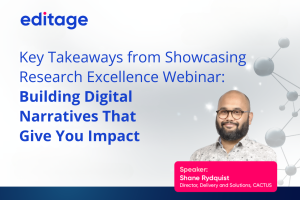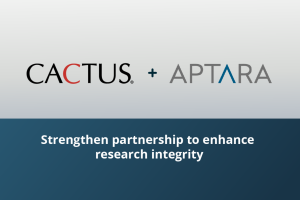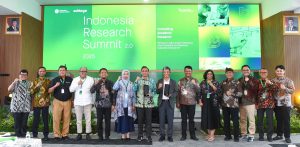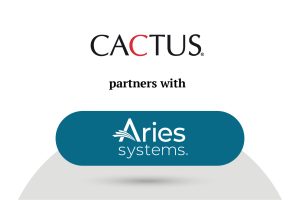In the wake of the pandemic sweeping across the world, the scholarly communication industry is rethinking ways to connect and collaborate. To keep up the momentum of conversations among industry colleagues even in these unprecedented times, Cactus Communications (CACTUS) organized a two-day virtual conference Stay Home, Stay Connected, Keep Growing! (#SSKvirtual2020) on May 21 and 22. This online event brought together thought leaders from the industry for five unique online sessions that answered these questions:
- What are publishers currently doing to tap into the digital transformation?
- What social strategies should academic societies adopt to build and support member engagement?
- How can AI be applied in today’s editorial office, and how can we ensure the human touch remains in all interactions with authors?
- How can publishers and academic societies support their researchers better in these times to build a social community that fosters collaboration and fulfills a sense of mission and membership?
Over two power-packed days of live interactive sessions, key representatives from academic societies and publishers presented their views on topics that are critical to understanding how research culture and science communication is evolving. Through this event, over 800 conference registrants, largely from Europe, Africa, China, Japan, and Australia, could interact with each other and discuss views and challenges. Below are some of the highlights from each conference session.
Session 1
Scholarly publishing in the era of digital transformation: How publishers are leveraging the wave of social and digital for greater impact
Comment from the session organizer, Harini Calamur, Head, Impact Science, CACTUS (Connect on LinkedIn)
 “What was fascinating about the session on how publishers are using digital and social is how similar this path is to what the news industry went through about a decade ago. There are terms like unbundling of journal content and classification of content by interest areas/concept. Also interesting is the move towards short-form content, blogs, podcasts, and videos under two minutes, all of which explain complex research ideas.”
“What was fascinating about the session on how publishers are using digital and social is how similar this path is to what the news industry went through about a decade ago. There are terms like unbundling of journal content and classification of content by interest areas/concept. Also interesting is the move towards short-form content, blogs, podcasts, and videos under two minutes, all of which explain complex research ideas.”
Session 2
Society science communication: Connecting published research and public outreach
Comment from the session organizer, Tayllor Stumpe, Manager, Society and Institutional Partnerships, CACTUS (Connect on Twitter and LinkedIn)
 “Researchers and society members are increasingly being encouraged to discuss their research not only with their traditional peers, but with peers outside of their academic disciplines, as well as with the public at large to influence local and federal policy-makers. However, while a public science communication movement is being encouraged, this does not mean that researchers and society members are necessarily comfortable expanding their ‘technical’ communication habits beyond presenting their work at conferences or publishing in journal.
“Researchers and society members are increasingly being encouraged to discuss their research not only with their traditional peers, but with peers outside of their academic disciplines, as well as with the public at large to influence local and federal policy-makers. However, while a public science communication movement is being encouraged, this does not mean that researchers and society members are necessarily comfortable expanding their ‘technical’ communication habits beyond presenting their work at conferences or publishing in journal.
Academic societies have begun developing public outreach movements with resources, toolkits, and professional guidance for their members to engage with a public audience. In addition to in-person communication, societies have also been positioning their online and offline content in non-technical ways for the public to accurately consume the research.
This session highlighted how AAAS and the American Geophysical Union are highlighting their societies’ strategic approaches through media and community outreach tools to encourage members to communicate broadly on their work and its societal impact.”
“We want the press to report science right, or not at all!”
Meagan Phelan, Executive Director of the Science Press Package, AAAS, who co-presented the session on connecting published research and public outreach with Olivia Ambrogio, Manager of Sharing Science, American Geophysical Union, said:
 “We want the press to report science right, or not at all! Scientific research is often inaccessible; it needs a millennial overhaul! Both the ladies talked about the importance of communicating science to not only the public, but also to fellow scientists.
“We want the press to report science right, or not at all! Scientific research is often inaccessible; it needs a millennial overhaul! Both the ladies talked about the importance of communicating science to not only the public, but also to fellow scientists.
We should be able to tell compelling stories around science by reducing jargon and engaging interdisciplinary fields. We need to create a community for all science communicators.
We need to utilize social media tools. Science Magazine and American Geophysical Union use Facebook and Twitter to maximize engagement. Some scientists even got more citations due to their presence on Twitter.
Can you a name a living scientist? You might have one down your street, but you don’t know! This is exactly why we need to humanize science! Invest in science communication and you might just fall in love with your own research. In communicating, even you will understand it better and have newfound motivation.”
Session 3
Scholarly communications: Where advocacy and social community intersect
Comment from the organizer, Donald Samulack, Head, Global Stakeholder Engagement, CACTUS (Connect on Twitter and LinkedIn)
 “One of the most interesting things about research communication to internal and external stakeholder communities is that each community is different. On top of this, each organization has a different mission and purpose. Therefore, approaches to advocacy, communicating mission and purpose, and stakeholder outreach is different in every case. There is no “one size fits all” – and the key take-away from this panel conversation was that because we are in a period of physical distancing related to a global health crisis, communication strategies need to rapidly adjust and prepare for the new normal. Last year’s playbook needs to sit on a shelf. Now is the time for innovation in the rethinking of communication outreach strategies.”
“One of the most interesting things about research communication to internal and external stakeholder communities is that each community is different. On top of this, each organization has a different mission and purpose. Therefore, approaches to advocacy, communicating mission and purpose, and stakeholder outreach is different in every case. There is no “one size fits all” – and the key take-away from this panel conversation was that because we are in a period of physical distancing related to a global health crisis, communication strategies need to rapidly adjust and prepare for the new normal. Last year’s playbook needs to sit on a shelf. Now is the time for innovation in the rethinking of communication outreach strategies.”
Session 4
Joy and stress triggers in academia: Amplifying the voice of researchers to create a more positive research culture
Comment from the organizer, Clarinda Cerejo, VP, Content and Community, CACTUS (Connect on Twitter and LinkedIn)
 “The session on Joy and Stress Triggers in Academia opened the doors to a new conversation that has been missing in scholarly publishing conferences thus far: Does the current global research culture provide researchers the impetus they need to excel? Are researchers happy with their work environment? Mental health is a serious but often neglected concern in academia, and in the current pandemic situation where the world is looking at researchers for solutions, it is more important than ever to think about how their environment can better contribute to their success. While academic publishers and societies may see themselves as too far removed from the problem, a key takeaway from this session was that a negative and harmful academic environment could shake the very foundations of research productivity, and that every stakeholder working with researchers has an important role to play in creating a more nurturing research culture.
“The session on Joy and Stress Triggers in Academia opened the doors to a new conversation that has been missing in scholarly publishing conferences thus far: Does the current global research culture provide researchers the impetus they need to excel? Are researchers happy with their work environment? Mental health is a serious but often neglected concern in academia, and in the current pandemic situation where the world is looking at researchers for solutions, it is more important than ever to think about how their environment can better contribute to their success. While academic publishers and societies may see themselves as too far removed from the problem, a key takeaway from this session was that a negative and harmful academic environment could shake the very foundations of research productivity, and that every stakeholder working with researchers has an important role to play in creating a more nurturing research culture.
Session 5:
Preprints, AI, and editorial workflows: A combination to revolutionize journal publishing—but then what?
Comment from the organizer, Christopher Leonard, Director of Product, CACTUS (Connect on Twitter and LinkedIn)
 “While it was apparent that AI may well be able to do some validation checks on a manuscript – and an increasingly large number of them as the technology proceeds – both publishers and authors highly value human input in ascertaining whether a piece of work is valid and novel. There will always be a place for human evaluation in screening academic research, although the responsibilities around certain checks could be alleviated from the reviewer with increasingly sophisticated technology – allowing them to focus on the research content, novelty, and validity.
“While it was apparent that AI may well be able to do some validation checks on a manuscript – and an increasingly large number of them as the technology proceeds – both publishers and authors highly value human input in ascertaining whether a piece of work is valid and novel. There will always be a place for human evaluation in screening academic research, although the responsibilities around certain checks could be alleviated from the reviewer with increasingly sophisticated technology – allowing them to focus on the research content, novelty, and validity.
However, the speed, transparency, and consistency of automated checking may mean an opportunity arises for another level of check between no review and full 3-person human review. This is where a manuscript could be said to have passed X checks for structure, language, and some level of validity (according to a certain AI service), which may prove to be useful to preprints that are traditionally not peer-reviewed and are seeing an explosion in popularity.
CACTUS thanks all the panelists and participants who supported us and made this conference a success. #SSKvirtual2020 was the first virtual conference organized by CACTUS. We will continue to experiment and innovate in order to create more opportunities for the scholarly communication industry to connect, collaborate, and grow.








